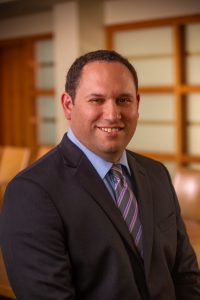Wis. Supreme Court Narrows Fraudulent-Transfer Exception, Suggests Stringent Pleading Requirements
Generally, companies purchasing the assets of another company are not responsible for the seller’s liabilities. One long-established, but poorly defined, exception applies when the assets are transferred fraudulently in an effort to evade liabilities. In Springer v. Nohl Electric Products Corp., the Wisconsin Supreme Court took a step towards clarifying (and perhaps limiting) this fraudulent-transfer exception, over the dissent of Justice Abrahamson.
While the majority opinion focused on the legal issue presented in the case—the proper legal standard for fraudulent transfer exception—Justice Abrahamson’s dissent was most concerned with the outcome of the litigation and its broader implications for due process.
In a 5-2 decision, the Court held that the Wisconsin Uniform Fraudulent Transfer Act (“WUFTA”), in chapter 242 of the Wisconsin Statutes, does not define the scope of the fraudulent-transfer exception to successor non-liability under common law. The Court additionally decided that summary judgment was appropriate because the plaintiff’s complaint did not clearly allege that the defendants were liable under a successor-liability theory. Justice Abrahamson dissented, briefly arguing that WUFTA should play a role in the fraudulent-transfer analysis, but focusing primarily on the Court’s decision to dismiss the case. She argued that even addressing an issue with the pleadings was inappropriate because the issue was not raised by the defendants and plaintiff had no opportunity to be heard on that issue.
Brief Background
Springer involved negligence and strict-liability claims against several companies for creating, distributing, and selling asbestos products. The complaint named Fire Brick Engineers Company, Inc. (“FBE2”) and its successor, Powers Holdings, Inc., as defendants. FBE2 was formed in the 1980s to purchase the assets of Fire Brick Engineers Company (“FBE1”), a company formed in the 1940s to manufacture and distribute asbestos products. FBE2 later merged with another company to form Powers.
After initially allowing the claims to continue to discovery, the trial court granted the defendants’ motion for summary judgment, holding that FBE2 (now Powers) could not be liable because it was formed more than a decade after the plaintiff’s husband was exposed to asbestos. In response, Springer argued that there was a factual dispute about whether FBE2 (and thus Powers) could be held liable under the fraudulent-transfer exception to successor non-liability because a number of circumstances surrounding the sale indicated a possible fraudulent intent. These included the fact that a FBE2 shareholder was aware of FBE1’s potential liabilities, several FBE2 shareholders acted as attorneys for FBE1, and FBE1’s assets were sold for inadequate consideration, without appraisal or negotiation.
Springer appealed to the Wisconsin Court of Appeals, which reversed, finding that WUFTA should govern the fraudulent-transfer exception and that the evidence showed there was a genuine issue of material fact as to whether the transfer from FBE1 to FBE2 triggered the fraudulent-transfer exception. Powers then successfully petitioned the Wisconsin Supreme Court for review.
Fraudulent Transfer Exception and WUFTA
The Wisconsin Supreme Court reversed, holding that WUFTA does not apply to the common law fraudulent-transfer exception. The Court pointed out that successor non-liability and its exceptions arose out of the American and English common law. On the other hand, WUFTA “exists independently from this common law history” and is focused not on holding successor entities responsible for their predecessors’ obligations, but on helping creditors collect claims which “may be frustrated by recent asset transfers.” 2018 WI 48, ¶27. After surveying a number of common law sources, the Court found WUFTA’s standard inapplicable to claims of fraudulent transfer regarding successor liability. Justice Abrahamson disagreed, stating that WUFTA should be a source of guidance for courts in identifying “indicia of fraud” for purposes of the fraudulent-transfer exception.
Summary Judgment and Justice Abrahamson’s Dissent
After determining that WUFTA does not govern the fraudulent transfer exception, the Court turned its attention to the procedural posture of the case. The Court noted that while Springer argued for successor liability in response to a motion for summary judgment, she never amended her complaint to allege successor liability. Evaluating the sufficiency of the pleadings, the majority found that Springer’s pleadings failed to “allege facts that plausibly suggest [she was] entitled to relief” against Powers and therefore affirmed the trial court’s order of summary judgment dismissing Powers.
Justice Abrahamson stridently disagreed with the Court’s decision to review the pleadings, noting that the defendants never challenged the sufficiency of the pleadings at any stage of litigation, including before the Wisconsin Supreme Court. Justice Abrahamson insisted that the issue of the sufficiency of the pleadings was not “properly before this court.” Id., ¶49 (Abrahamson, J., dissenting). She was particularly troubled by the fact that the parties were not given notice that the Court “[was] concerned about these issues” and were therefore given no opportunity to address them. Id. Pointing to two recent cases, Justice Abrahamson lamented what she described as “the court’s growing bad habit of addressing issues without giving parties notice and the opportunity to address the issue . . . .” Id., ¶52. She voiced a concern that this trend might violate due process, which “requires (at a minimum) notice and an opportunity to be heard.” Id., ¶51.
Take-Away
Springer makes clear that the fraudulent-transfer exception to successor non-liability is rather narrow. It is also serves as a startling reminder of increasingly demanding pleading standards. The long-established flexibility of notice pleading was somewhat curtailed by the U.S. Supreme Court’s Twombly and Iqbal decisions a decade ago, and the Wisconsin Supreme Court has largely followed suit. Springer reminds litigants to take care to amend or seek leave to amend pleadings as part of the defense of a summary judgment motion, even when that motion does not expressly attack the sufficiency of the initial pleading.
Law Clerk Collin Weyers assisted with researching and writing this post.





